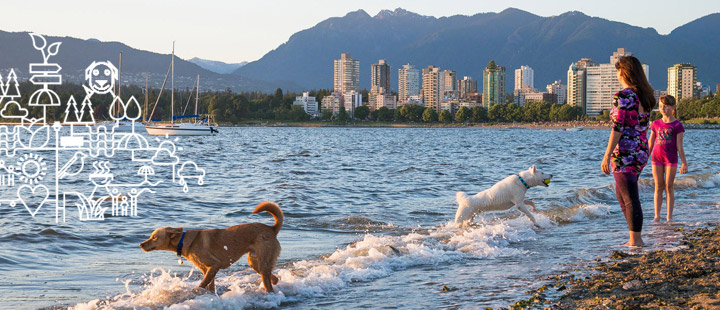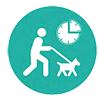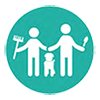

What you need to know
We adopted the People, Parks, and Dogs Strategy PDF file (6 MB) in October 2017 to help create safe and engaging park spaces for people with and without dogs.
Off-leash area renewal and expansion at Emery Barnes Park
We’re renewing and expanding the off-leash area at Emery Barnes Park. Construction is underway with expected completion in summer 2025.
Based on input from round 2 of public engagement, the design was revised and the final concept is now available. The final concept design was approved by the Park Board in spring 2023.
New off-leash areas coming to Heather and Granville Parks
To improve access to dog off-leash areas in Kitsilano, Fairview, and Mount Pleasant, new, fenced off-leash areas are coming to both Heather Park and Granville Park.
- Construction at Heather Park is now complete and the off-leash area is open to public.
- Construction at Granville Park is underway with expected completion in summer 2025.
Learn more about
Heather Park Learn more about
Granville Park
John Hendry Park renewal plan approved by Park Board
The John Hendry Park Renewal Plan was approved in May 2022. The plan will see the dog off-leash area remain in its current location, its boundaries will be clearly defined, and amenities added as per the People, Parks, and Dogs Strategy.
Did you know?
Dogs are only allowed at the following beaches and must be in the designated off-leash areas:
- New Brighton Park (seasonal and time restrictions apply)
- John Hendry Park
- Spanish Banks Beach Park
- Sunset Beach Park
- Hadden Park (seasonal and time restrictions apply)
Get updates
Please confirm your subscription
Click the link in the email we just sent you.
Check your junk email folder if you don’t see a confirmation email from us.
Understanding Vancouver's dog off-leash areas
Our dog population is growing and so is the demand to recreate off-leash dog areas in our parks and public spaces.
The People, Parks, and Dogs strategy reviewed what is working well and what challenges are coming up in Vancouver’s off-leash areas. This review helps us identify what is most needed to support sharing limited park space and reduce conflicts.
How the strategy is guiding us
The People, Parks, and Dogs strategy PDF file (6 MB) provides a framework for the next ten years and beyond to deliver well-planned and designed parks that accommodate park users, with and without dogs.
The vision for the strategy is:
- To promote the comfort and safety of all park users by fostering responsible dog ownership through clarifying rules, boundaries, and etiquette for dog off-leash activities in parks.
- To integrate a variety of appealing and safe dog off-leash spaces in our parks that are easily accessed by local residents.
The recommendations fall within four themes.
 What we are doing
What we are doing
Since the strategy was adopted in October 2017, we have been working towards implementing all of the recommendations.
Check out our current off-leash area projects around Vancouver.
Other resources
Dog off-leash areas
Find all of Vancouver’s dog parks and off-leash areas, whether in your neighbourhood or along the water.
Dog waste collection pilot project
The dog waste collection pilot has ended. Find out what we learned.
Responsible dog ownership
Owning a dog is a happy experience, but it's a lot of responsibility too. Find out everything that you will have to do if you own a dog.
Suggest a new park feature or amenity
Our Park Development and Planning teams review suggestions on a regular basis to see how they align with capital funding and planning strategies.

Full report and supporting documents
Contact us
![]()
Give feedback about a park, community centre, pool, rink, or other Park Board facility.







